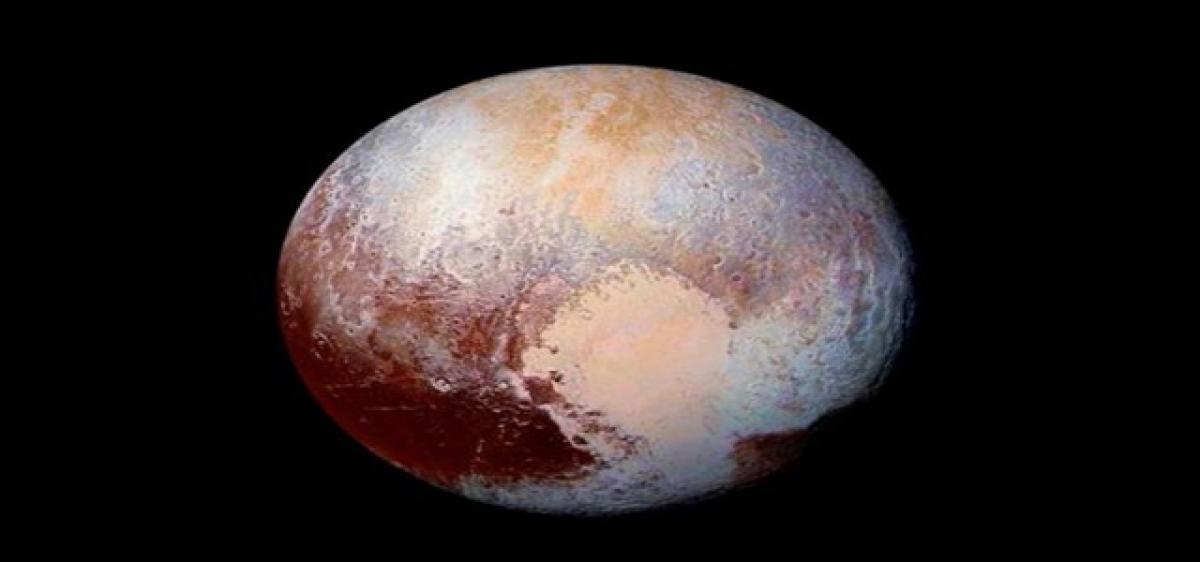Live
- SBI rescues sr citizen from `46L cyber fraud
- 12-yr-old dies of electrocution
- Installation of smart meters opposed
- State Cabinet expansion in focus as CM leaves for Delhi
- Need to reintroduce country’s forgotten pride: Bhagwat
- Pant shatters Iyer's IPL auction record, sold to Super Giants for Rs 27 cr
- Yuva Sangeetha Sammelanam held
- Dharani proves a bane for 25K families across State
- Reckless, Dangerous Arms Race
- Russia needs a peace deal as it is running out of soldiers
Just In

Researchers believe they now know the origin of the large heart-shaped nitrogen glacier revealed in 2015 on Pluto by the New Horizons spacecraft.
London: Researchers believe they now know the origin of the large heart-shaped nitrogen glacier revealed in 2015 on Pluto by the New Horizons spacecraft.
Pluto's peculiar insolation and atmosphere favour nitrogen condensation near the equator, in the lower altitude regions, leading to an accumulation of ice at the bottom of Sputnik Planum, a vast topographic basin, according to a new study published in the journal Nature.
At the bottom of the basin, the pressure of the atmosphere -- and therefore of gaseous nitrogen -- increases, and the corresponding frost temperature is higher than outside the basin, which allows the nitrogen to preferably condense into ice.
Simulations by researchers Paris Universite Pierre et Marie Curie showed that the nitrogen ice inevitably accumulates in the basin, thus forming a permanent nitrogen reservoir, as observed by New Horizons.
Pluto is a paradise for glaciologists. Among the types of ice covering its surface, nitrogen is the most volatile: when it sublimes (at -235 degrees C), it forms a thin atmosphere in equilibrium with the ice reservoir at the surface.
One of the most unexpected observations from New Horizons, which flew by Pluto in July 2015, showed that this reservoir of solid nitrogen is extremely massive, and mostly contained in "Sputnik Planum," a topographic basin located within the tropics of Pluto.
Methane frost also appears all over the northern hemisphere, except at the equator, while carbon monoxide ice in smaller amounts was only detected in Sputnik Planum. Until now, the distribution of Pluto's ice remained unexplained.
To better understand the physical processes at work on Pluto, the researchers developed a numerical thermal model of the surface of the dwarf planet able to simulate the nitrogen, methane and carbon monoxide cycles over thousands of years, and compared the results with the observations made by the New Horizons spacecraft.

© 2024 Hyderabad Media House Limited/The Hans India. All rights reserved. Powered by hocalwire.com







